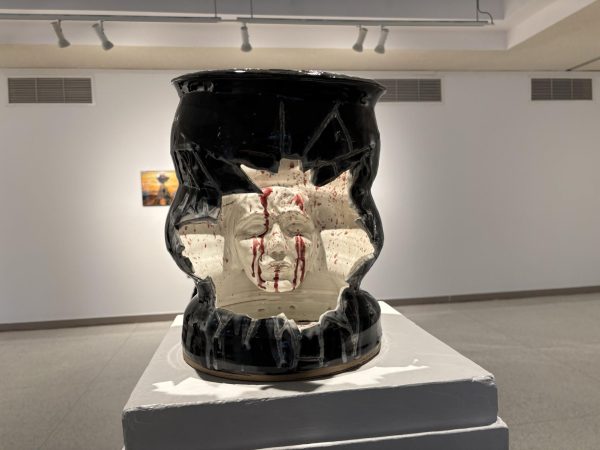Chat-bot to teach children?
The fear of a computer takeover is becoming more and more prevalent to some, as an artificial intelligence chatbot capable of almost human-like feats such as written literature and rendered art is freely accessible through the click of a button.
Chat Generative Pre-trained Transformer is a chatbot launched by OpenAI in November 2022. It uses artificial intelligence to learn and adapt its language model through the family of large language models accessible in the GPT-3 servers.
Dean of Student Experience Ian Binnington, who advises the Honor Committee, said that the Allegheny faculty has not had a meeting discussing ChatGPT and its implications for higher education.
“Google Translate is a form of AI intervention that the language department has been dealing with for a decade, so we are not unfamiliar with dealing with AI in terms of student work,” Binnington said.
Professor of English and Director of Writing Alexis Hart found ChatGPT to be disconcerting and startling at first glance but said it is still useful as an educational tool.
“After the initial shock, and reading more generated text, you start to see the patterns in its writing, meaning that it is not thinking,” Hart said. “It is a tool just as we use pen and paper to write down our thoughts and memories.”.
Hart also said that students need to be smart about how they use AI learning, but conceding all work to a bot will not be tolerated.
“ChatGPT has applications that could be very useful in the writing department and others,” Hart said. “Using the bot to help with inspiration for a written project, or comparing and contrasting your work with what the bot had written can be decent feedback. Students need to be discerning enough to see what they can learn from the bot, but wholesale conceding your work to the bot, that’s when it becomes problematic.”
Binnington had similar thoughts concerning the implementation of ChatGPT in higher education, both sanctioned and unsanctioned.
“Higher education periodically faces hurdles such as the paper mill or contract cheating which are acts of blatant cheating,” Binnington said.
Paper mill, also referred to as essay mill, is a form of plagiarism that involves commissioning another person to produce an original piece of writing with the intention of academic fraud. Contract cheating is another form of plagiarism that higher education has been battling for years. It is the practice of students engaging in a third-party to complete assignments.
“This bot is going to be no different than them. Under the right instruction and intention, the bot can help students learn more effectively. I can completely imagine a scenario where ChatGPT is integrated into the classroom, where a student is asked to compare their writing to the generated text and do a reflection piece; in the end, a bot is a tool. It can be used for cheating, but it can also be used for so much more.”
Students all around the Allegheny campus, including Carmélione Majewski, ’24, have been stirred up in conversation about ChatGPT.
“I’ve been hearing some of my friends talk about it, and checked it out myself,” Majewski said. “It’s fascinating how fast the bot generated text. The essays it wrote also made sense. As a psychology major where a lot of our literature is online and can be put into a library for the bot to access, I think it is something we should be using in this college at some point to serve as a resource hub and a creative tool.”
Psychology Professor Emerita Juvia Heuchert has been singing the AI’s praises.
“I am assuming my students will use ChatGPT,” Heuchert said. “It is a great product, and I am very excited. It is uncanny how well it writes, as well as the art it produces, the codes it can configure. It is a fantastic product.”
“ChatGPT is a powerful system that can output writing that flows well to the point it can write news articles and research papers that are indistinguishable from what a person might have written,” Heuchert said.
“It will be difficult for us teachers to tell if a submitted paper was written by the student or the AI, which requires us to adjust our teaching methods,” Heuchert said. “If the students are going to be using the bot, we ask them to add their own experience, data or other forms of contribution to the generated text as their form of putting in work.”
Heuchert also suggested the possibility of watermarking chat-generated content as a form to help instructors in higher education manage plagiarism.
Binnington said that the introduction of this bot could go either direction, depending on the students’ will to learn and not take the easy road out.
“I think most students are honest,” he said.







